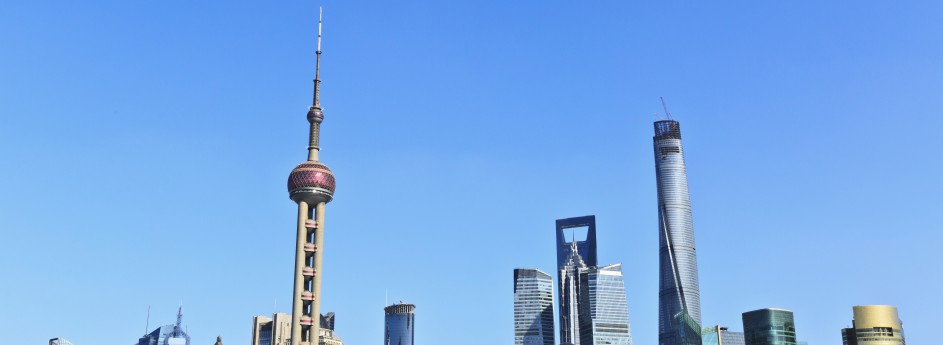China Stops Using Organs From Executed Prisoners on January 1: Report
China will “comprehensively terminate” the use of executed prisoners as a source of organs for transplants from January 1, the Southern Metropolis Daily quoted Huang Jiefu, head of the China Organ Donation Committee, as saying.
Voluntary donation will become the only source for organ transplants, Huang, a former vice health minister, said at a meeting on Wednesday.
Beijing has made similar pledges before and Huang in November 2012 said that China would end its reliance on organs from executed prisoners within two years.
China banned trading in human organs in 2007, but demand for transplants far exceeds supply in the country of 1.3 billion people, opening the door to forced donations and illegal sales.
Huang said around 300,000 patients in China are in “urgent need” of organ transplants every year, but only about 10,000 operations are carried out, Thursday’s report said.
Only 0.6 out of every million people in China donate their organs, compared with 37 in Spain, he said.
Organ donations are not widespread as many Chinese believe they will be reincarnated after death and therefore feel the need to keep a complete body.
Apart from traditional thinking, fears over potential corruption are another cause of the low donation rates, he added.
“People’s concerns over whether organ donation can be carried out in a fair, just and open manner is also an important reason why it has been so hard for the cause to advance,” the paper cited Huang as saying.
But China has introduced a new donation system and he said around 1,500 people have donated organs so far in 2014, more than the total for the previous four years.
– AFP
China’s Railway Diplomacy (Part II)
With the Turkish Istanbul to Ankara project under its belt, China also signed with Saudi Arabia for the US$1.8 billion Phase 1 Package 1 of the Haramain HSR Project for which China Railway Construction Corporation (CRCC) again headed a consortium. The demonstration effect of its successful completion will be immense for the entire Middle East, particularly the Gulf states.
Over the summer, Premier Li Keqiang’s HSR diplomacy took him to Hungary and Serbia where he signed an agreement for a link between Budapest and Belgrade. Hungarian Prime Minister disclosed a year ago that China had already set up a fund a couple years prior to help finance Central and East European projects of which the $3 billion Budapest-Belgrade run represents a major one.
Another project grabbing international headlines in late November, albeit not HSR, was a contract between CRCC and the Nigerian Ministry of Transport for the construction of a $12 billion 22-stop 120 km/hr line stretching 1,402 kilometers from capital Lagos in the west to Calabar in the east. The line is China’s single largest overseas train contract to date.
Adopting Chinese technical standards, the project involves equipment exports of $4 billion, including construction machinery, cars, and steel products. The project will create 200,000 direct and indirect jobs and up to 30,000 permanent positions once the train is up and running. Bature Gafai, a senior Nigerian Transport Ministry official, said the coastal railway “is vital for the development of the Eastern Economic Corridor”.
China is also aggressively promoting its HSR technology to countries in South and Southeast Asia, including Malaysia, Thailand, Myanmar, Laos, and most importantly, India. In October, China Southern Railway Corp. (CSR) signed on to supply 30 80 km/hr 3-car light rail trains for the Ampang Line in Malaysia, providing financing, participation in construction, and technology transfer to the Malaysians.
In April 2013, the company had invested $122.6 million for a rail equipment manufacturing base for welding, assembly, testing, overhaul, and refurbishment. The first phase of the base will be completed by the end of the year able to assemble 150 new vehicles and overhaul 100 older ones per year.
CRCC is also making significant inroads in India where it will conduct a feasibility study starting early next year for the construction of the “game changing” 300 km/hr 1,754 km Delhi–Chennai HSR corridor, which would become the world’s second longest HSR line after Beijing-Guangzhou. However, the completion of the study does not guarantee the project will go to China. (Meanwhile, the Japan International Cooperation Agency is doing a separate study for the $9.7 billion 500 km HSR line connecting Mumbai with Ahmedabad.)
Indian Prime Minister Narendra Modi has conceived of a “diamond quadrilateral” set of projects for HSR lines connecting Delhi-Mumbai, Mumbai-Chennai, Chennai-Kolkata, Kolkata-Delhi, and Mumbai-Kolkata. Thus, the Delhi-Chennai line was put on the front burner by the new Indian railways minister, Suresh Prabhu, a close aide to the Prime Minister.
If it is a go with a price tag of $32.6 billion, the project would be a world impacting breakthrough for China’s HSR technology exports, paving the way for exports of railway designs, highly durable tracks, automated signals for faster trains, and modern train stations. The Chinese would also provide training in heavy haul for Indian railway officials, re-development of existing stations, and even the establishment of a railway university in India. Currently, India’s British-built rail system is in a sorry state of disrepair and the country has added only 11,000 km of track since independence compared with 9 times that in China. The new line would cut down travel time between the two cities from 28 to a mere 6 hours.
In North America, the CRCC-led consortium’s successful bid last month for the uncontested tender for the $3.75 billion HSR line connecting Mexico City with Queretaro was abruptly revoked by the Mexican government after opposition lawmakers accused it of being fixed. Badly embarrassed by the fiasco, the Mexicans paid out more than 100 million RMB ($16.27 million) in compensation to the CRCC consortium. Yet, just three weeks later, the local press reported and sources close to CRCC confirmed the company indeed intends to re-bid for the project.
Last October, China Daily reported that a consortium made up of China Northern Railway (CNR), its subsidiary Tangshan Railway and US-based SunGroup USA submitted an ‘expression of interest’ for a contract to supply 95 trains as well as development of maintenance facilities for the 800 mile HSR line between San Francisco and Los Angles and ultimately to Sacramento and San Diego.
Early next year, the California HSR Authority will solicit a Request for Proposals for trains that can travel faster than 200 miles (322 km) per hour. The project includes a ‘buy American’ provision requiring vehicles to be made in the US. Also in October, CNR announced it had won a $567 million contract with the Massachusetts Department of Transportation for the supply of 284 trains for Boston’s subway with an option to build 58 more.
In the same month, visiting Chinese Premier Li Keqiang signed a MoU for the building of the 803 km HSR link between Moscow and Kazan in Russia’s oil-rich Tatarstan region. Later, Russian railway officials announced Chinese companies are willing to commit $10.8 billion toward the $27 billion project that serves as the first stage of the grand $230 billion 7,000+ km line connecting Beijing with Moscow. The inter-continental link would cut travel time from the present 6 days to under two.
The Beijing Times quoted Wang Mengshu, a tunnel and railway expert at the Chinese Academy of Engineering as saying, “if the funds are raised smoothly…the line can be completed in five years at the quickest.” The line’s completion would become yet another symbol of burgeoning political and economic ties between the two giant countries.
With these mega-deals, China will have exported its train and especially HSR technology to virtually all corners of the world. And this is only the beginning.
China’s Railway Diplomacy (Part I)
Over the past few years, in tandem with China’s speedy mastery of high speed rail (HSR) technology and phenomenal growth of the HSR network throughout the country, along with the accolades have sprung up a multitude of criticisms from various quarters and over a wide range of issues.
Japan’s Kawasaki Heavy Industries has accused its Chinese counterparts of stealing technology and the Western press has disparaged China’s HSR safety record on account of the 2011 fatal collision in Wenzhou. Some international affairs commentators have even described the export of China’s HSR technology and construction of rail lines abroad as clear manifestation of China’s geo-political expansionist ambitions.
In a little more than a decade since China’s first HSR line between Qinhuangdao and Shenyang that ran at 200 km/hr (now considered ‘dongche’ speed (sub-high speed), China’s HSR network has extended to over 12,000 km, about four times as long as nearest rival Spain and more than half of the world’s total. By 2020, the Chinese Ministry of Railways wants to more than double that length to 25,000 km and connect all major cities. (Following the Wenzhou crash, train speeds were reduced from 350 km/hr to 300 km/hr but the Ministry has indicated it may raise it back up to 350 km/hr when deemed prudent.)
This two-part post focuses on the surge in expansion of China’s HSR overseas as the result of a unique mix of state strategy, financial wherewithal, centralized ownership of technologies, low cost construction, and offers of technical assistance that will assure China’s success in winning bids throughout the world, including in the developed world. So much so that foreign industry insiders complain their companies are ill-equipped to compete with China Railway Construction Corporation (CRCC) on cost and state support.
An article in Railway Technology (railway-technology.com) ascribes to the recently inaugurated 250 km/hr 533 km line between Istanbul and capital Ankara in Turkey, China’s first major completed HSR line abroad, as displaying the basic contours of China’s HSR export model – CRCC working in conjunction with the China National Machinery Import and Export Corporation (CMC) and Turkish firms Cengiz Construction and Ibrahim Cecen Ictas Construction. It represents China’s “deep commitment to cracking into and dominating the global high speed construction and rolling stock market”, wrote the author.
Last year, CRCC’s total revenue closed in on $95 billion but the company wants to greatly up the foreign share from 4% to 30%, reported Reuters. In the first nine months of 2014, CRCC has signed 115 billion RMB (US$18.7 billion) in worldwide contracts, roughly 1/5 of all new deals during that period. In May, the company created a unit to manage and coordinate its foreign operations. In addition, in preparation for better accessing international markets, China’s two domestic railcar makers, China Southern Railway (CSR) and China Northern Railway (CNR) Corporations have filed with the government to merge as the China Railway Transportation Co. with a combined market capitalization of $26 billion.
The Chinese government presides over project negotiations, leveraging the country’s centralized ownership of technologies that allows it to offer attractive export terms. The China Economic Review cites Ji Jialun, a professor at Beijing Jiaotong University’s School of Traffic and Transportation as saying it’s a luxury that few if any rival European and Japanese companies can afford since different technologies are controlled by different companies.
Much lower production and construction costs add to the attraction of Chinese bids. According to a World Bank study, based on cost efficiencies achieved at home, CRCC can build systems at US$17 to $21 million per kilometer, much cheaper than the $25-$39 million price range of European and Japanese companies. Most important, to attract developing countries that otherwise would balk at pricey HSR schemes, China is able to provide a very competitive financing regime. On the Turkish project, for example, the Chinese helped finance it with US$750 million in loans, including $500 million enjoying very favourable terms.
This is not to mention other well endowed funding channels like the China Development Bank and the Export-Import Bank of China that can coordinate support for the investment and trade activities of China’s state-owned enterprises abroad. China has also set up the BRICS bank with $50 billion to start as well as its most recent Asian Infrastructure Investment Bank (with China contributing more than half of the funding) and the $40 billion Silk Road fund envisaged by President Xi, all of which are geared toward infrastructural development and mitigating transport and other bottlenecks across Asia and the developing world. China surely doesn’t lack funds to back projects as its foreign exchange reserves have swelled to US$3.888 trillion as of the end of September.
Part II will look at other key projects the Chinese have won, actively bidding for, or interested in building.



